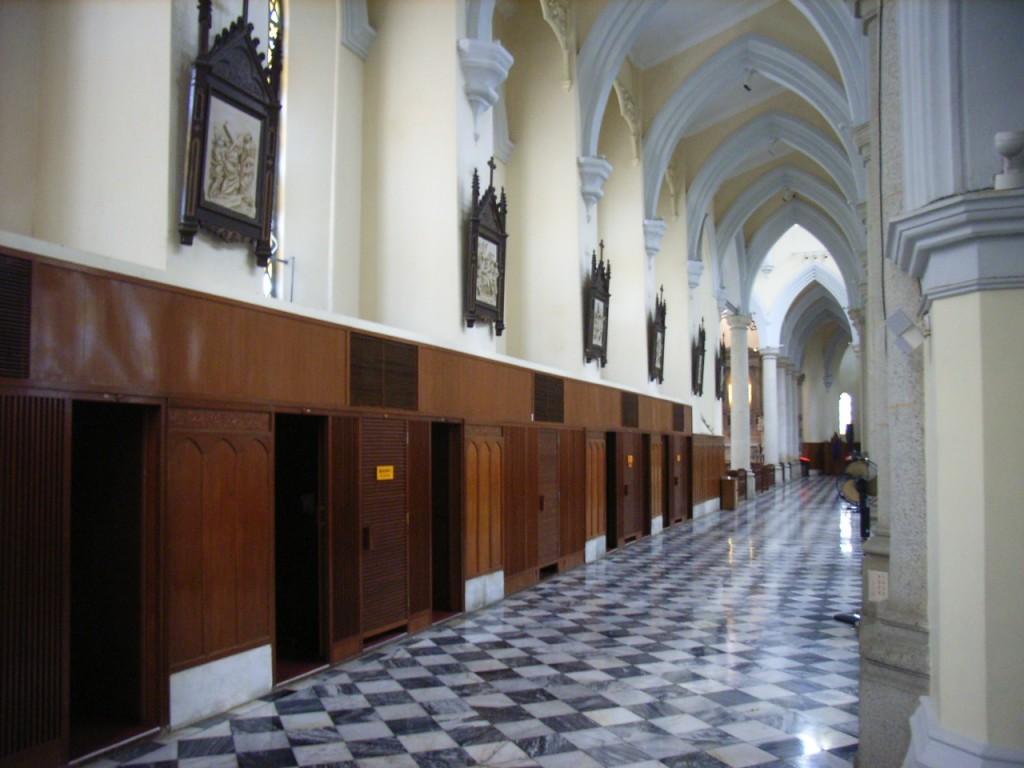The Stations of the Cross is one of the most neglected devotions in daily Catholic prayer. Often we are encouraged to pray the Rosary, Divine Mercy Chaplet, and Liturgy of the Hours (which are all great suggestions) but I do not remember anyone suggesting to me to pray the Stations of the Cross on a daily basis.
[featured-image single_newwindow=”false”]Wikipedia[/featured-image]
This is unfortunate as many of the saints have derived great benefit from accompanying Jesus on his Way to Calvary and many were inspired to compose their own versions of the ancient devotion.
So here are four reasons (in no particular order) why we should consider praying the Stations of the Cross on a daily basis:
1. The Stations trace their origin to the Blessed Virgin Mary
An ancient tradition has it that Mary visited the sites of Jesus’ suffering, death and resurrection on a daily basis after His ascension into Heaven. Even before that other traditions say that Mary followed Jesus along His bitter Way of the Cross that led to Calvary and Scripture at the very least testifies that Mary was there at the foot of the Cross.
So Mary was the first to accompany Jesus in His sufferings and she kept all of these things in her heart, reflecting daily on them after His ascension.
2. The Stations allow us to visit the Holy Land
Around the 17th century, Franciscans began to develop a “Way of the Cross” in local churches whereby the faithful could walk through the passion narrative without having to go to Jerusalem. Here is a brief history:
Innocent XI, in 1686, granted to the Franciscans, in answer to their petition, the right to erect the Stations in all their churches, and declared that all the indulgences that had ever been given for devoutly visiting the actual scenes of Christ’s Passion, could thenceforth be gained by Franciscans and all others affiliated to their order if they made the Way of the Cross in their own churches in the accustomed manner. Innocent XII confirmed the privilege in 1694 and Benedict XIII in 1726 extended it to all the faithful. In 1731 Clement XII still further extended it by permitting the indulgenced Stations to all churches, provided that they were erected by a Franciscan father with the sanction of the ordinary. At the same time he definitely fixed the number of Stations at fourteen. (Catholic Encyclopedia, emphasis added)
Additionally, in a certain (real) way we can also accompany the suffering and persecution that our brothers and sisters are experiencing in the Holy Land and Middle East.
3. The Stations were made daily by St. John Paul II
The Way of the Cross held a special place in the heart of St. John Paul II. He grew up near an ancient shrine in the city of “Kalwaria Zebrzydowska.” The shrine there was erected on a landscape of hills and was fashioned to resemble the Way of the Cross in Jerusalem. There are numerous chapels whereby a pilgrim can trace Jesus’ passion, death and resurrection. Visiting the site when he became pope, John Paul II said,
I really do not know how to thank Divine Providence for granting me to revisit this place: Kalwaria Zebrzydowska, the Shrine of the Mother of God, the holy places of Jerusalem connected with the life of Jesus and that of his Mother reproduced here, the “little ways”, as they are called. I visited them often as a boy and as a young man. I visited them as a priest. Especially, I often visited the Shrine of Kalwaria as Archbishop of Krakow and Cardinal. (Apostolic Pilgrimage to Poland)
Making the Way of the Cross at Kalwaria shaped him and as a result he prayed the Stations of the Cross on a daily basis, no mater what. He even installed a set of Stations in the apostolic apartments.
4. The Stations were requested by Jesus in the private revelations given to Saint Faustina
While St. Faustina is primarily known for being given the Divine Mercy Chaplet, Jesus also specifically told her to make the Stations of the Cross on a daily basis during the 3:00 hour:
My daughter, try your best to make the Stations of the Cross in this hour, provided that your duties permit it; and if you are not able to make the Stations of the Cross, then at least step into the chapel for a moment and adore, in the Blessed Sacrament, My Heart, which is full of mercy (Diary, 1572, emphasis added).
The Stations are a great devotion to unite us to Christ’s suffering and death and allow us the opportunity to accompany Him on the Via Dolorosa. We watch as He suffers under the weight of the cross and realize it was our sins that crucified Him.
The Stations are not meant to only be prayed during Lent, but can be devoutly made every day of the year.

